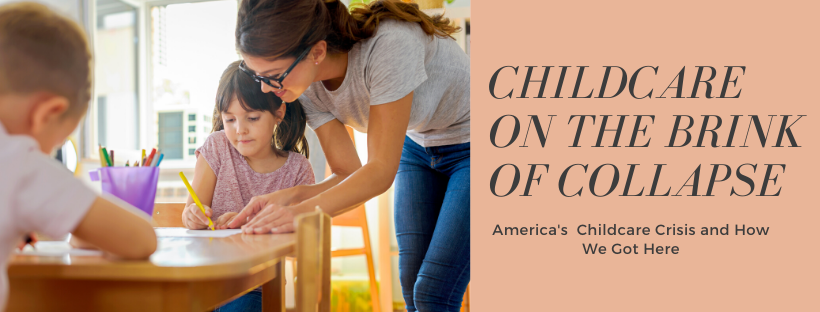Childcare On The Brink Of Collapse
Perhaps more than anything else, the pandemic has revealed America’s weak spots; cracks in our societal infrastructure that have been ready to crumble for quite some time. One of these exploited fissures that is now strained to the point of breaking is childcare. Even before COVID-19 decimated the economy and public health system, childcare was an issue demanding national attention. With the average childcare worker making $10.72 an hour and it being more expensive in half of states to enroll a child in daycare than public universities, it is a system destined to fail without significant reform. Birth rates in the US have hit a 32 year low and according to potential parents, financial instability and the enormous costs associated with children is the main reason why.
Enter COVID-19.
So far the virus has caused at least 336,000 childcare workers to lose their jobs. 61% of parents say that their childcare provider has closed. And those that remain have increased costs due to new safety protocols and less children enrolling. Childcare workers continue to make less than 98% of other American workers despite their designation as essential workers. As COVID-19 cases reach past 50,000 new cases a day with 100,000 daily cases in the forecast, it doesn’t look like schools will be reopening at full capacity in the fall. Many schools are looking into hybrid options–offering a combination of significantly reduced class time and remote learning. Which leaves both the childcare industry and parents at loose ends.
Was childcare always like this? Expensive, underappreciated, barely limping forward? The answer is no, it wasn’t. In fact, there is great precedent for a well funded, federally subsidized national childcare system. In 1940 the Lanham Act was passed to accommodate the increase of working mothers due to World War II. The historic bill provided federally subsidized childcare centers nationwide. They included medical clinics and infirmeries and provided shoppers to pick up items on personalized grocery lists for the working mothers. Children enrolled in these programs grew up to be more likely to be employed and earn higher salaries. 90% of those who participated in a survey at the time said that the centers should be even more widely established. However, funding was stopped and the program shut down after the war ended. In 1971 we once again came close to passing federally subsidized childcare across the nation but Nixon vetoed it. In contrast to the efforts of the past, the White House’s proposed 2018 fiscal budget cut $100 million for military childcare programs and the childcare act that was introduced was based on tax deductions that both parties found mostly benefited the rich.
Several senators have called for funding childcare centers through the crisis. Sen. Patty Murrey was instrumental in getting $3.5 billion included in the CARES Act for nationwide childcare assistance for low income families and has since introduced legislation with Rep. Rosa L. DeLauro and Rep. Robert C. Scott that would establish a $50 billion Child Care Stabilization Fund. Republicans, however, have so far blocked any attempts to pass any proposal that would aid the American people, dragging their feet on a second stimulus bill and refusing to pass the HEROES Act introduced by the Democrats. It is clear that without further aid, the childcare system in the United States will not make it through to the other side of this crisis and until schools are able to reopen fully, parents, and subsequently their jobs and the economy, will suffer.
We’ve included some quotes from parents and childcare providers below about their current predicament. To read more accounts, click here.
“I want Congress and policymakers to know that child care providers have been forgotten as heroes and essential workers. I see support for front line medical staff, and grocery employees, mail carriers and teachers (rightfully so!). But who is thanking the people who open their programs to the children of these people? Who is acknowledging the risk these men and women put themselves and their families in direct contact with by accepting these children, every day? And who is talking about how LITTLE these men and women are compensated for as they continue to teach and address the social-emotional needs of these children? I can afford to pay my child care provider while not attending, but only just. And I know that she is not getting paid what she deserves. I would love for Congress and policymakers to know that child care providers are an abused resource to the communities they serve, and I would love to see them get the spotlight they deserve as they step up (as they’ve ALWAYS done) in this time of crisis.” -– Chelsea, parent from Rochester, NY.
“As a small private child care provider serving few essential workers, we made the difficult decision to close for the protection and safety of our children, families, and staff. Our future is uncertain, and we need fiscal relief for our employees and our ability to sustain this circumstance.” – Michele, child care provider from Tracy, CA.
Yours in Strength,
The Take Back Control Team




Leave a Reply
Want to join the discussion?Feel free to contribute!